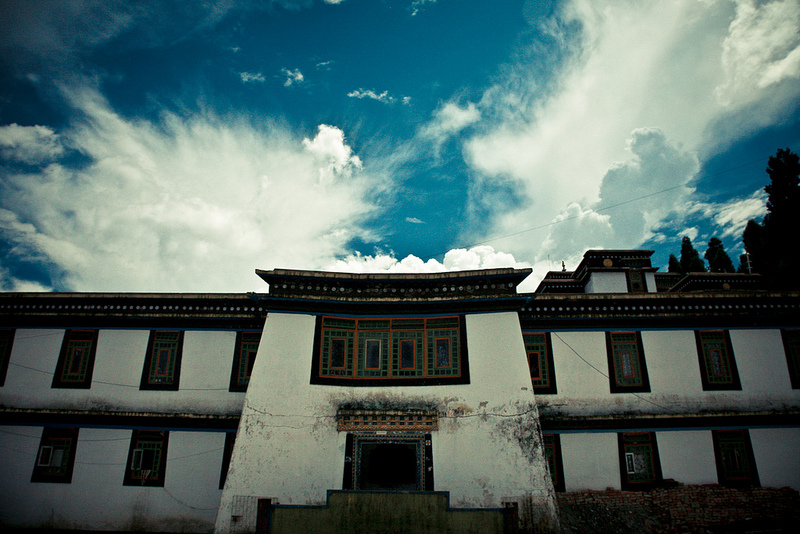I always thought spirituality is an abstract concept. Whenever I need some time on my own, just to think things through, I walk over to the nearby temple and sit on the marble steps. I would sit there, on the cold marble, observing people coming to bow down before the idol. They bow their heads, wishing for something they desperately need or to kneel before God to show their thankfulness for fulfilling their wishes.
I was there, just listening to the sound of bell which creates the waves of positive vibes, and makes me try and reach the state of clear mind with untangled thoughts. Even though it is not the solution to my problems, I would be in peaceful mind than I used to be before.
I felt similar peace of mind when on a family trip to Coorg, Karnataka. We stopped at the Namdroling Nyingmapa – the Tibetan Monastery and the Golden Temple. The positive vibration sets off our souls from their Chants and Bells. It instantly made me feel connected to myself on a deeper level of spirituality.
India is the land with people who has various faiths and religion that thrive to be in peace. The Hindu and Buddhist monasteries spread across the country are visited by people of all religions. Whether it is a spiritual journey, or a trek or just a leisure vacation, these are the Top 10 Monasteries in India to be highlighted in your travel list:
Contents
- 1) Namdroling Nyingmapa Monastery, Karnataka
- 2) Hemis Monastery, Ladakh
- 3) Lamayuru Monastery, Ladakh
- 4) Thiksey Monastery, Ladakh
- 5) Phugtal Monastery, Zanskar
- 6) Mindrolling Monastery, Dehradun
- 7) Rumtek Monastery, Sikkim
- 8) Tsuglagkhang Complex, Dharamshala
- 9) Ghum Monastery, West Bengal
- 10) Tawang Monastery, Arunachal Pradesh
- 10 Most Scenic Hill Stations in South India
- A Beginner's Guide to India
- The Ultimate Hampi Travel Guide
- 10 Offbeat Honeymoon Destinations in India
- Following Rama's Trail : Visit Epic Places in the Ramayana
- Top Destinations for a Spiritual Retreat in India
- India’s most visited place is not the Taj Mahal!
- Which Ladakh Bike Trip Itinerary Suits You Best?
1) Namdroling Nyingmapa Monastery, Karnataka
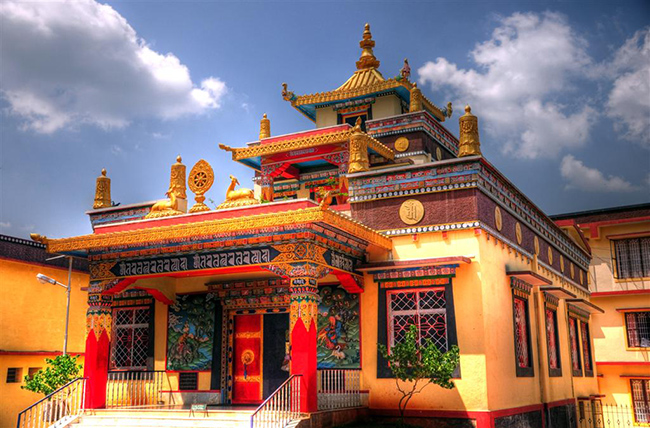
source: flickr.com/photos/rahulr/4025443147
It is the largest ancient teaching of Buddhist scripture in old Tibetan way. It is located in the Tibetan settlement town Bylakuppe, west of Mysore, The distance will be 6 hours drive from the Airport to the Monastery at Kushalnagar. It is possible to take a train from Bangalore to Mysore and then a government bus from Mysore to Kushalnagar. It is well connected to the most of the major cities in South India.
The Monastery is the home to over five thousand Monks and Nuns. They chant in a hypnotic way with a prayer wheel. Anybody can visit the Monastery but with the prior permission called PAP i.e. Protected Area Permit which takes, three to four months to process. Since their place is filled with Lamas, only limited visitors are allowed.
2) Hemis Monastery, Ladakh
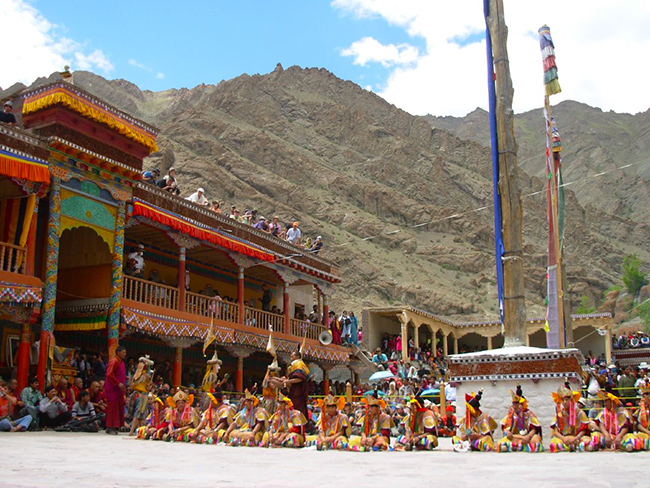
source: flickr.com/photos/madpai/249373614
Hemis Monastery, It is known to be the largest and wealthiest in the Ladakh region, situated in the foothills of Indus, about 45 km from Leh. Since 11thcentury, the monastery houses have some of the most astounding murals and Buddha statues. It is situated on the Leh-Manali highway and has budget to luxury range of hotels. Monastery also provides overnight stay for the tourists and the locals also offer home stay facilities. Best time to visit Hemis Monastery for tour and trek is in-between May and September. Most routes for trek are closed after November dues to heavy snowfall.
3) Lamayuru Monastery, Ladakh
.jpg)
source: flickr.com/photos/lfphotos/10000126963
Lamayuru or Yuru is a Tibetan Buddhist monastery. It is located at the East of Fotu-La, 15 km. A mountain passes between Leh and Kargil, on the hightway of Srinagar-Leh, at the height of 3,510 mtrs.It is one of the oldest and largest Gompas (Monasteries) in Ladak with around 150 permanent monks.
The annual festival Yuru Kabgyat is the major attraction of this monastery, where the mask dance of the monks is the highlight of the festival. It is situated 127km from Leh and basic accommodations are provided in the monastery.
4) Thiksey Monastery, Ladakh
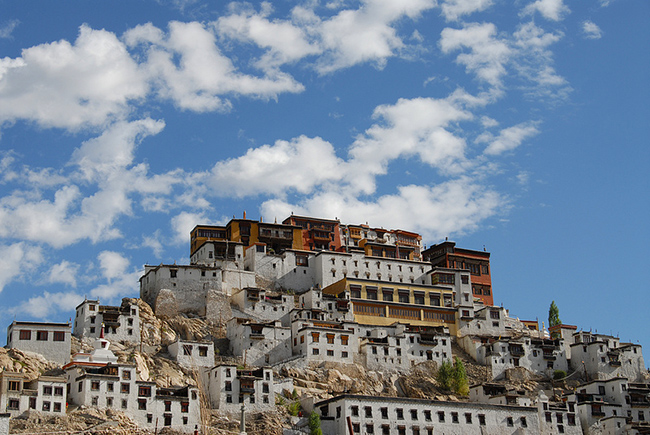
source: flickr.com/photos/bjgraf/8976676520
Thiksey Monastery is a 12 storey complex, located at an altitude of 3,600m in the Indus valley. One of the main reason this place scores is the 15mtrs statue of Maitreya (future Buddha). Temple which was installed was to welcome the visit of the 14thDalai Lama to the Monastery in 1970 and it tool four years to complete. It is about 20k southeast of Leh, just off the Leh-Manali highway.
5) Phugtal Monastery, Zanskar
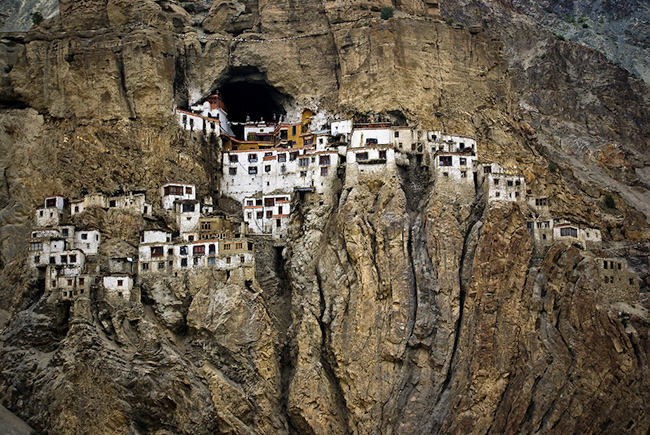
Source: flickr.com/photos/txpz/2530900284
Love trekking? It’s a must to visit the 12thcentury Phuktal or Phugtal Monastery situated on the tributary of Lungnak River in Ladak. Uniquely constructed like a honeycomb on a cliff. The structure is only visible from the mouth of the cave (Phuk means cave), the structure is stunning. Visitors must come across a suspension bridge over the river to reach the monastery, which is Zanskar region of Jammu and Kashmir, Padum, the administrative town is the closest town. From there is takes nearly two or three days trek to reach the monastery.
6) Mindrolling Monastery, Dehradun
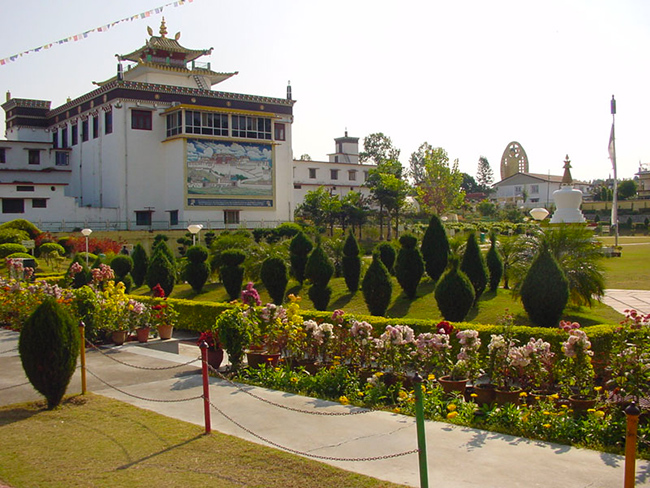
source: flickr.com/photos/shayargautam/341189163
Mindrolling Monastery in India was found in 1965; it should be pronounced as Minh-dro-lyng and is located near Clement Town in Dehradun, Uttarakhand. It is one of the major Monasteries of the Nyingma School in Tibet and is home to The Great Stupa (doom-shaped building). Standing tall at 185 feet and 100 square feet wide, it is one of the largest Stupas in the world. A day visit to take in the tranquility of the beautiful gardens surrounding the monasteries can be carried out by the visitors. For overnight or extended stay, advance booking is advisable.
7) Rumtek Monastery, Sikkim
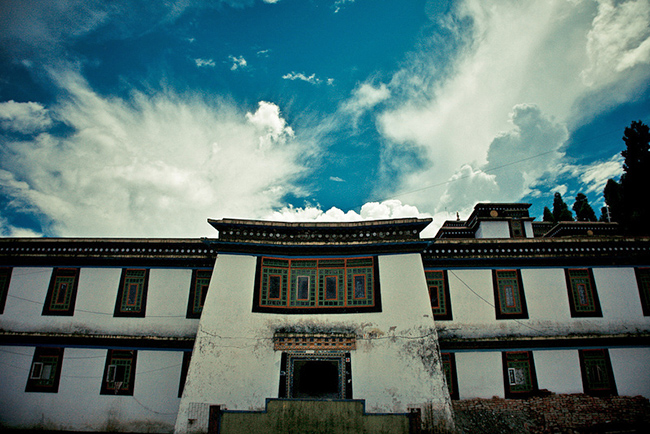
source: flickr.com/photos/ramkrsna/7983231100
Rumtek Monastery, is also called Dharmachakra Centre, is one of the 200 Monasteries in Sikkim. Originally built in 16th century by the 9th Karmapa Wangchuk Dorje, this Tibetan Buddhist Monastery served as the main seat of Karma Kagyu Lineage in Sikkim for some time but it was re-established in the city of Sikkim it is. A steep walk for 15 minutes is required to reach the monastery. Foreigners must carry their passports and Sikkim permits to enter.
8) Tsuglagkhang Complex, Dharamshala
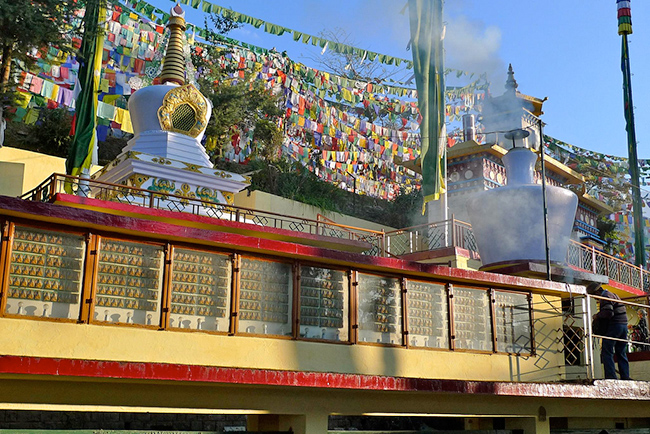
source: flickr.com/photos/brad-darren/5200994653
The Tsuglagkhang Complex located in Dharamsala, where belongs, the official residence of the Tibetan leader, the Dalai Lama, is the largest Tibetan temple outside Tibet. It is built with a large meditation hall that is sculpted with some of the most beautiful statues and Thangkas as well as a Kalachakra templw which has the most beautiful murals.
Must visit the Buddhist pilgrims and take a ritual walk around the complex or append some time browsing some books at the bookshop. Every year in February or March, the Dalai Lama holds public lectures for 10 days or so, but do check out his Holiness’s itinerary if you wish to see him or meet him.
9) Ghum Monastery, West Bengal
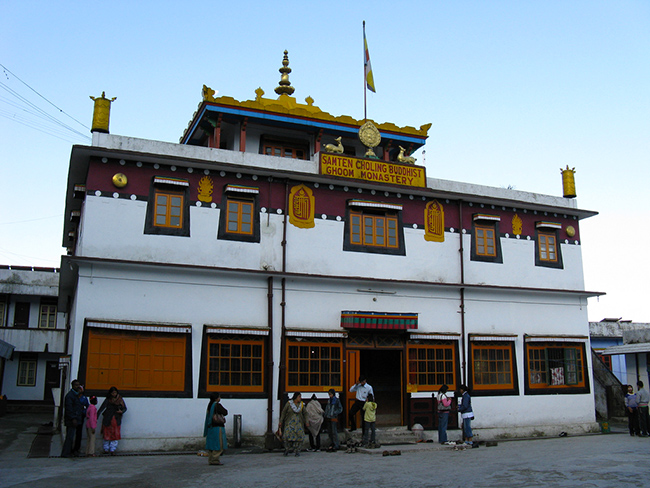
source: flickr.com/photos/shankaronline/7353873770
This monastery was built in 1875 by Lama Sherab Gyatso and is the largest of the three monasteries in Ghum. It is located at Ghum, at an elevation of 8,000 feet and 8km away from Darjeeling in West Bengal. There is a 15 feet high statue of Maitreya Buddha (future Buddha) in the monastery. One of the sensational feel is to listen to the Monk’s chants in the background while overlooking the Kanchenjunga, the third highest mountain in the world.
10) Tawang Monastery, Arunachal Pradesh
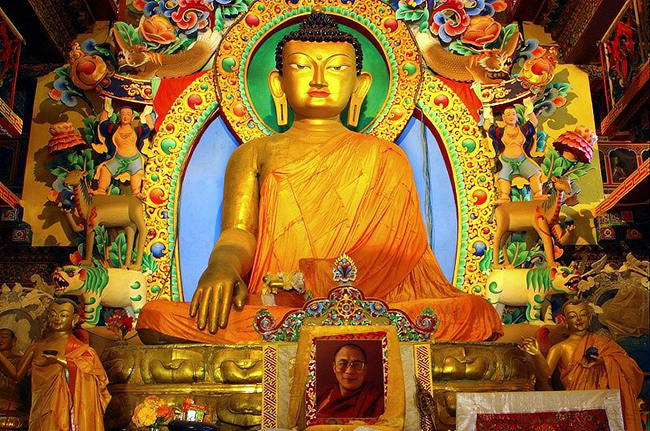
source: flickr.com/photos/appaji/285878126
Tawang Monastery in Arunachal Pradesh, founded 1680-81, is the largest and most famous monastery in India and also one of the largest monasteries of Mahayana sect in Asia. It is very close to the Tibetan border in the valley of Tawang-chu which flows from Tibet. It is located 10,000 feet above sea level, near the border of Bhutan, the monastery appears like a fort, and it can be reached via Guwahati in Assam and Bhalukpong in Arunachal Pradesh. Arunachal Pradesh is not a easy place, it isarestricted area only permits can enter.
This post was published on Trodly travel blog.

